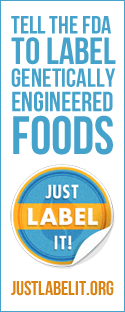|
VANCOUVER -- The University of British Columbia has good news for anyone who's been a little nervous about sinking their teeth into a juicy hamburger ever since horse meat was found in European beef a few years ago.
Also read, Food economist has a beef with 'antibiotic-free' label. Researchers at the university have developed a new technique to identify unwanted animal products in ground beef, using a laser-equipped spectrometer and statistical analysis. DNA testing can already identify foreign species in meat products, but it can't locate offal, such as hearts, livers, kidneys and stomachs, mixed in with meat of the same species. UBC's new technique can do both. "We think this might be a way to fill the gap," said Yaxi Hu, a PhD candidate in UBC's faculty of land and food systems, as well as the study's lead author. Hu said when a food product has a low market share, there is potential for unscrupulous companies to mix it into higher-value foods. Since the consumption of offal in North America is pretty low, the students guessed it was possible that it was being used in meat. The study doesn't make any findings about whether this is happening, but it does lay the groundwork for future studies to test beef products from Canadian supermarkets to see if they contain offal. Instead, Hu and fellow food science students made their own meat samples by grinding together beef and offal. They then aimed a spectrometer at the meat. Animal products have different chemical compositions, so their molecules react to energy from the laser in different ways. The spectrometer captures images of their reactions, which are saved in a database that can be used to compare with other samples. Hu said the instrumentation for the technique is not too complex so it could be adopted by industry and government fairly easily. They would just need a spectrometer and software that connects to a database of spectral images, she said. "Our database ... can be transferred to a lot of other places, and they can use this database to see what kind of products they have -- if it's an authentic one or an adulterated one," she said. The study was funded by the National Sciences and Engineering Research Council of Canada, Mitacs and the Peter Wall Institute for Advanced Studies. The 2013 European horse meat scandal is among the most well-known examples of food fraud. Beef products in several countries were found to contain undeclared horse meat, prompting outrage from consumers. But Canada has not been immune to the issue. A study released earlier this year by researchers at the University of Guelph and commissioned by the Canadian Food Inspection Agency recently found that 20 per cent of sausages sampled from grocery stores across Canada contained meats that weren't on the label. Most alarming for kosher or halal consumers, seven of 27 beef sausages examined in the study were found to contain pork. Hu said she is more concerned about safety than undeclared meat. She said she became interested in food fraud because she's from China, where milk and infant formula was found to have been adulterated with melamine in 2008, hospitalizing more than 50,000 babies and killing six. "I don't want my products to be fraudulent but if it's safe, I can sort of stand it," she said. "But if the adulterant is something that's not an edible animal source -- for example, I know that there are people (in other countries) using rat, or dog or cat meat -- that's really disgusting to me." SOURCE Laura Kane, The Canadian Press
0 Comments
Leave a Reply. |
Advertisement
News & Updates
Stay informed with the latest news around foodservice, agriculture and other related food news. Advertisement Opportunities
|


 RSS Feed
RSS Feed


